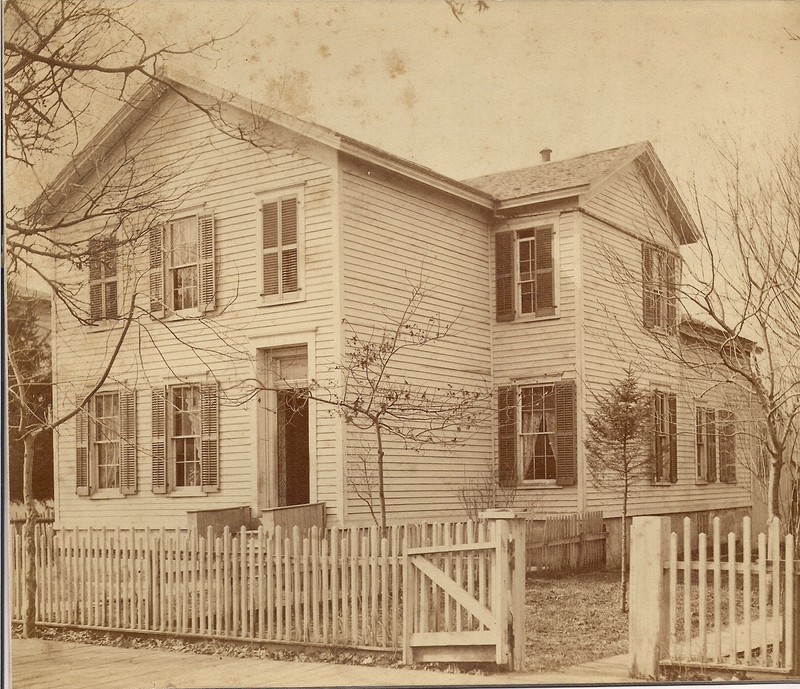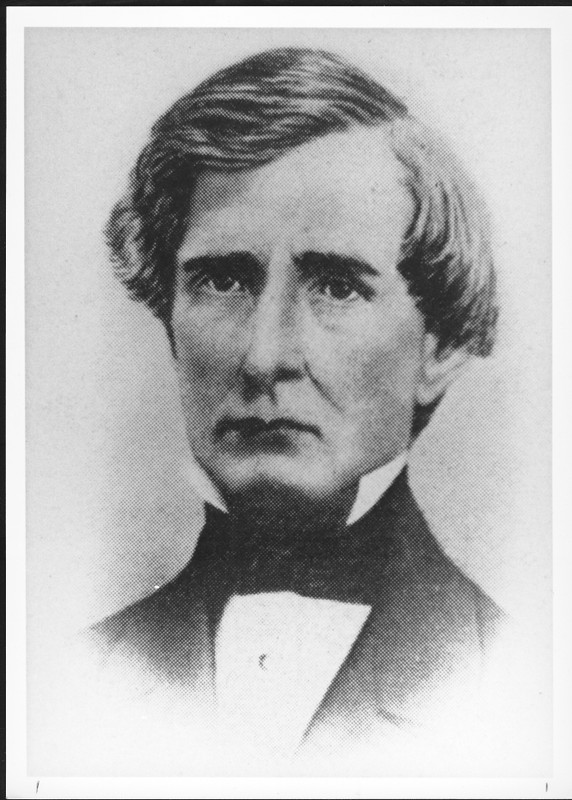Swampscot Cottage
Introduction
Author-Uploaded Audio
Swampscot Introduction
Text-to-speech Audio
Swampscot Cottage, a modest two-story home on the corner of Church Street and Judson Avenue, was the first home in Evanston the Willard family resided in. They began renting the property in 1859, while Frances and Mary Willard attended North-Western Female College. The decision to move to Evanston reflects the influence that Willard’s father, Josiah Willard, had on her and the family. Frances Willard’s memory of Swampscot and her father are evidence of that influence. The family ultimately left Swampscot in 1862, following the death of Willard's sister Mary.
Images
Photograph of Swampscot Cottage on the corner of Judson Ave and Church St

Photograph of Josiah Willard

Backstory and Context
Text-to-speech Audio
Swampscot cottage, on the corner of Church Street and Judson Avenue, served as the first Willard family home in Evanston. The Willards had moved to Evanston from Janesville, Wisconsin, as Frances Willard and her sister, Mary Willard, were enrolled in North-Western Female College (this education was a luxury for women of the time). However, the decision to uproot the family from Janesville, where they had resided since 1847, and enroll the sisters at North-Western was not straightforward. The role Josiah Willard, their father, played in the family tells the story of how the Willards came to Evanston.
Before attending North-Western Female College, Frances Willard and her sister spent a term at Milwaukee Female College [1]. The siblings stayed with their aunt, Sarah Hill, an instructor at the college, and Willard remembers the time at Milwaukee with fondness [2]. However, after a single term, Josiah Willard decided to end their enrollment at Milwaukee. Mr. Willard’s approval would be needed for the sisters to continue their education elsewhere.
Josiah Willard’s relationship with his family reflected norms of mid-nineteenth century America but was fundamental in shaping Frances Willard’s future. Mr. Willard had ambitions of becoming a preacher and studied at Oberlin College but left due to poor health and took up farming in Janesville [3]. While in Janesville, he was a prominent member of the community serving in the state legislature for a time and even introduced Abraham Lincoln to the 1859 Wisconsin State Fair in Milwaukee [4]. A colleague of Mr. Willard commented to Frances Willard after his death:
On the slavery, temperance, education, and other questions he was a radical. He was exceedingly orthodox, and strict in his conduct of life as it regards Sabbath observance or personal habits etc. He was more of a ‘church man’ than suited my taste or notions. But the strongest impression made on my mind by your father was, that no matter how strict the rules he might accept or teach, he was at the same time a man of great, free, brotherly spirit, who was ready to join any movement which he believed would elevate and help humanity [5].
While Josiah Willards’s progressive attitudes made him a role model for his daughter, his strictness and coldness placed pressure on Willard and the family to continuously seek his approval [6]. This complex environment is the backdrop of the Willard’s move to Evanston. After one term at Milwaukee Female College, Willard learned that her father would not send them back for another term. In her memoirs, Willard recalls, “It was the greatest grief my life had known up to that time, when I learned that my father had determined not to send us back again, because he was a Methodist and preferred a school of that denomination [7].”
Evanston and its schools were founded by Methodists. According to Willard, the family had heard of Evanston through their church newspaper and heard good reviews about the town from their cousin, Morilla Hill [8]. Mr. Willard eventually agreed to send the Willard girls to school again, but it was at North-Western this time. Although it took some convincing, as Willard recalls, “we importuned the good man of the house until he told us he thought more favorably of Evanston [9].” The Willard sisters spent one term on their own in Evanston but soon after the whole family moved from their farm in Janesville to the Methodist community of Evanston and their home at Swampscot Cottage[10].
Sources
[1] Frances Willard, Glimpses of 50 Years: The Autobiography of an American Woman (Chicago: Women’s Temperance Publication Association, 1889). 94.
[2] Ibid.
[3] Ruth B. Bordin, Frances Willard: A Biography (Chapel Hill: University of North Carolina Press, 1986). 19.
[4] WCTU Archives. Collection 2, Excerpt from “Portrait and Biographical Album of Rock County, Wisconsin” Pages 735 and 736. Box 1 Folder 16.
[5] WCTU Archives. Collection 2, Excerpt from “Guide to Holiness”, 1868. Box 1 Folder 16.
[6] Bordin, 18.
[7] Willard, Glimpses. 97.
[8] Ibid.
[9] Ibid.
[10] Willard, Glimpses. 99 and 101.
WCTU Photograph Collection.
WCTU Photograph Collection.
